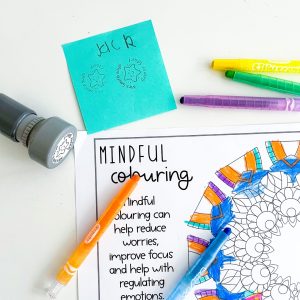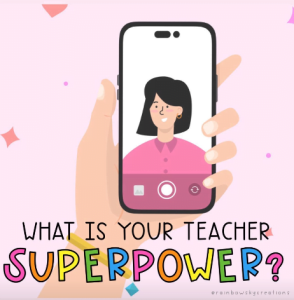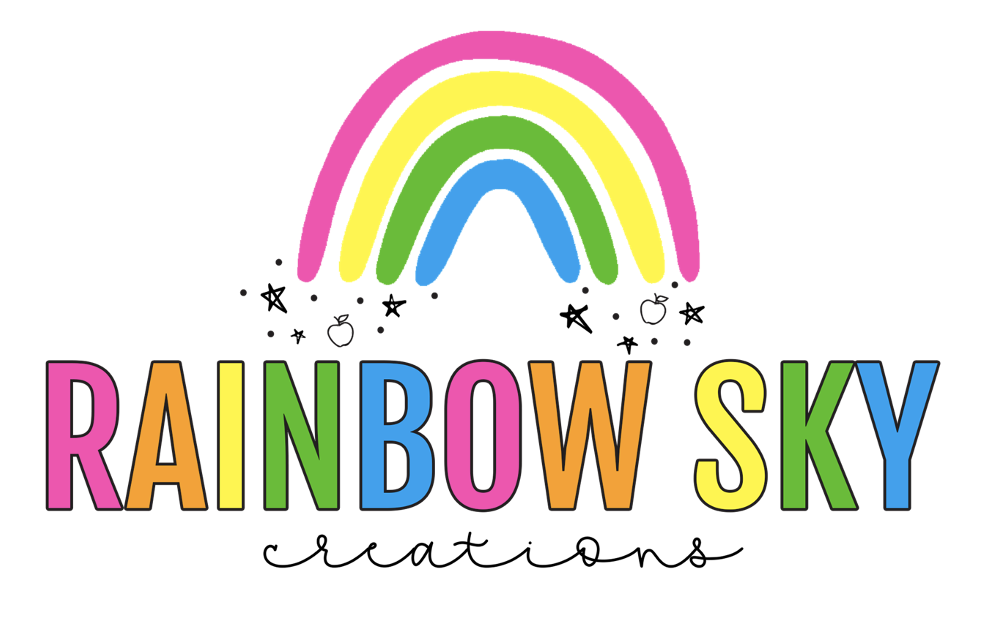Are you searching for ways to incorporate sensory rest to help foster a sense of calm and balance in your classroom?
Look no further! In today’s bustling learning environments, allowing students to recharge and find their inner calm is essential. That’s why we’re here to share some friendly and informative tips on nurturing sensory rest to promote classroom harmony.
Before we dive in…
What is sensory rest, and how will it benefit your students?
Sensory rest activities help students unwind and reduce stress, fostering emotional well-being – providing a break from cognitive tasks enhances focus and attention when students return to academic work.
Additionally, sensory rest encourages self-regulation as students become more aware of their sensory needs and preferences. We often hear about neurodiverse students needing sensory rest, but the truth is, every student will benefit from including it within the school day.
Engaging in creative outlets during sensory rest stimulates imagination and problem-solving skills, contributing to overall cognitive development. Sensory rest also helps with regulation – and remember if you are not regulated you cannot learn!
If this topic of sensory rest and how you can use it in your classroom is of interest to you, check out our podcast episode with Dave Jereb – a trailblazer paediatric occupational therapist.
“When it comes to sensory overload, prevention is key. Getting ahead of it or preventing it from building up in the first place is so much easier than trying to play catch-up when the scales have already been tipped into overload.” Sharla (The Choas and the Clutter)
6 sensory rest breaks you could try this week in your classroom:
Drawing or Doodling
Sometimes, a blank canvas is all it takes to unleash creativity and soothe the mind. Equip your classroom with paper, drawing books, and whiteboards, or even take the artistic expression outdoors with chalk.
Encouraging students to doodle or draw allows them to channel their thoughts and emotions in a peaceful, creative and non-verbal way.
Mindfulness Colouring
Piggybacking off doodling, why not try some mindful colouring with your students? Mindful colouring has been proven to improve vision, motor skills, focus and sleep! It has also been shown to reduce anxiety and stress.
You could even take this activity outside to enjoy.
Find this mindful colouring activity inside our student Wellbeing Journals.
Reading or Listening to Audiobooks
Dive into the world of literature as a means of relaxation and escape. Set up cozy reading corners with various books to cater to different interests and reading levels.
Additionally, consider incorporating audiobooks to provide auditory stimulation and engage auditory learners in a calming storytelling experience. Choose an audiobook or podcast to listen to as a class at the end of the lesson or leading up to or after a break time.
Sensory Resources
Sensory items in primary school classrooms not only engage students’ senses, promote fine motor skills, alleviate stress, and encourage exploration and experimentation.
By manipulating tactile materials like playdough, LEGO, or blocks, students can discover and learn through hands-on experiences, fostering a deeper understanding of concepts and promoting sensory-rich learning environments.
Try setting up sensory activities in the morning when students come in, or put time aside before break time or at the end of the day.
Lights Off or Dimmed
Sometimes, less is more when it comes to creating a serene atmosphere—experiment with turning off or dimming the lights to reduce visual stimulation and create a calming ambience.
Soft lighting can help students feel more comfortable and focused, fostering a conducive environment for relaxation and concentration.
Free Time
Celebrate the value of unstructured time by giving students a short break for self-directed pursuits.
Set aside 15 minutes or more of free time, during which students can choose their preferred activity, such as drawing, writing, exploring technology, playing games with peers, or engaging with sensory items.
Providing autonomy encourages self-regulation and cultivates a sense of ownership over one’s well-being – plus we all need a break from time to time.
Remember, creating calm in the classroom is not only beneficial for students but also for educators. By incorporating some of these nurturing sensory rest practices into your daily routine, you’ll promote a harmonious learning environment where everyone can thrive.
Here’s to a peaceful and productive classroom experience!
If you are a New Teacher – take our fun quiz to find out your Teaching Superpower!
What to read next:
Activity ideas to support student wellbeing
The science of reading – This is where to start










